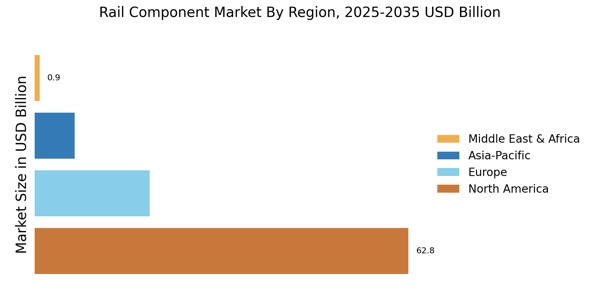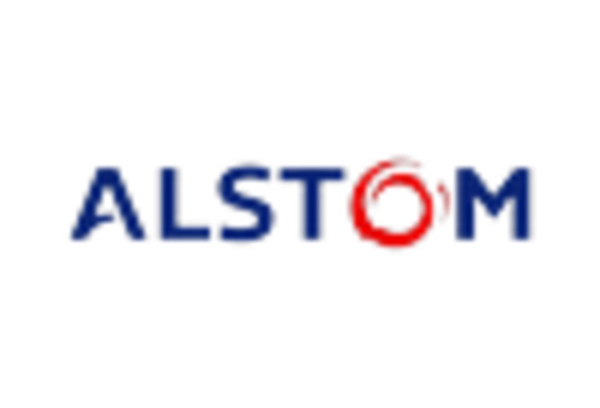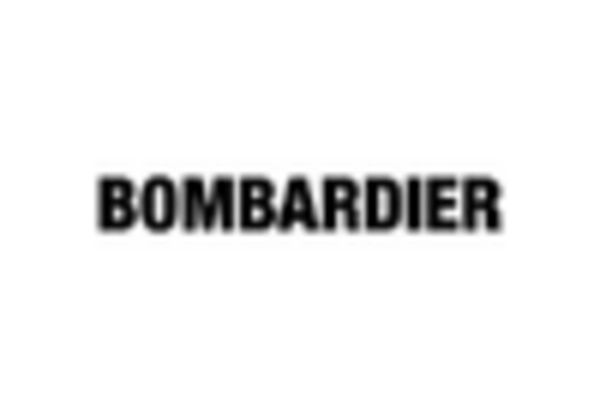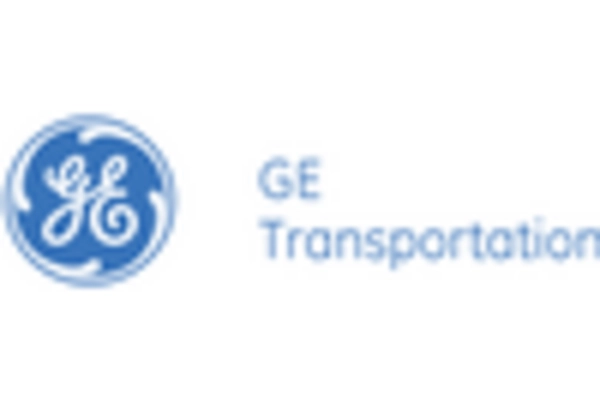Increased Demand for Rail Transportation
The Rail Component Market is experiencing a notable surge in demand for rail transportation, driven by the need for efficient and sustainable logistics solutions. As urban populations grow, the reliance on rail systems for both passenger and freight transport intensifies. In 2025, it is estimated that rail transport will account for approximately 8% of total freight movement, highlighting its critical role in supply chain efficiency. This increasing demand necessitates the development and enhancement of rail components, including tracks, signaling systems, and rolling stock, to ensure safety and reliability. Consequently, manufacturers in the Rail Component Market are likely to invest in innovative technologies and materials to meet these evolving requirements.
Technological Innovations in Rail Systems
Technological innovations are reshaping the Rail Component Market, as advancements in automation, data analytics, and materials science enhance operational efficiency. The integration of smart technologies, such as predictive maintenance systems and real-time monitoring, is becoming increasingly prevalent. In 2025, it is anticipated that the adoption of these technologies will lead to a 15% reduction in operational costs for rail operators. This trend not only improves safety and reliability but also drives demand for advanced rail components, including sensors and automated systems. As the industry embraces these innovations, the Rail Component Market is likely to witness a transformation in product offerings and service delivery.
Urbanization and Increased Freight Movement
Urbanization is a critical factor driving the Rail Component Market, as the rapid growth of cities leads to increased freight movement and passenger demand. As urban areas expand, the need for efficient transportation systems becomes paramount. In 2025, urban freight transport is projected to grow by 30%, necessitating the expansion and modernization of rail networks. This trend creates opportunities for the Rail Component Market, as it requires the development of new rail lines, upgraded signaling systems, and enhanced rolling stock. The interplay between urbanization and rail infrastructure development is likely to shape the future landscape of the Rail Component Market, fostering innovation and investment.
Government Investments in Rail Infrastructure
Government investments in rail infrastructure are a pivotal driver for the Rail Component Market. Many countries are prioritizing rail as a key component of their transportation strategy, recognizing its potential to reduce congestion and lower carbon emissions. In 2025, public spending on rail infrastructure is projected to exceed 100 billion dollars, reflecting a commitment to modernizing existing systems and expanding networks. This influx of capital is expected to stimulate demand for various rail components, such as signaling equipment, track materials, and maintenance tools. As governments seek to enhance connectivity and promote economic growth, the Rail Component Market stands to benefit significantly from these initiatives.
Focus on Sustainability and Environmental Regulations
The Rail Component Market is significantly influenced by the growing focus on sustainability and stringent environmental regulations. As nations strive to meet climate goals, there is an increasing emphasis on reducing greenhouse gas emissions from transportation. Rail systems are often viewed as a more sustainable alternative to road transport, prompting investments in eco-friendly rail components. In 2025, it is expected that the market for sustainable rail technologies will grow by 20%, driven by regulatory pressures and consumer demand for greener solutions. This shift encourages manufacturers to innovate and develop components that align with sustainability objectives, thereby enhancing the overall appeal of the Rail Component Market.


















Leave a Comment